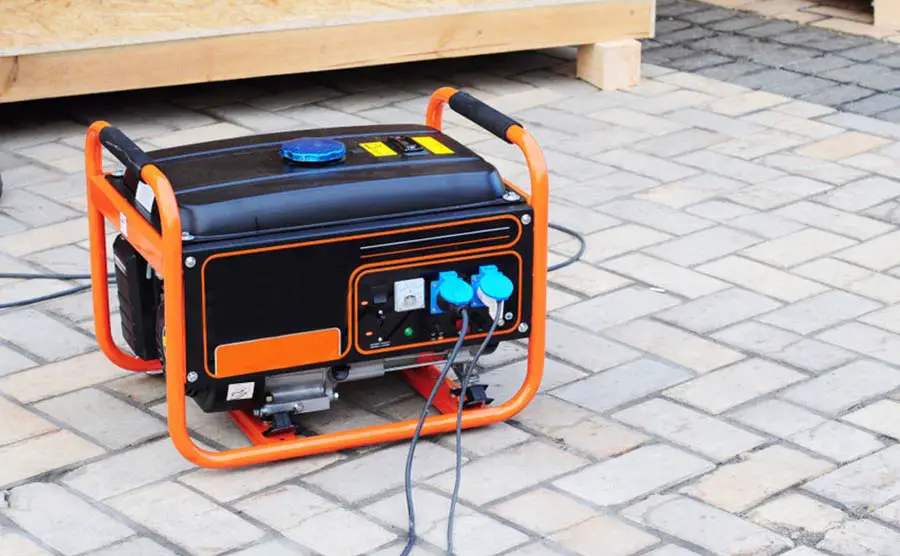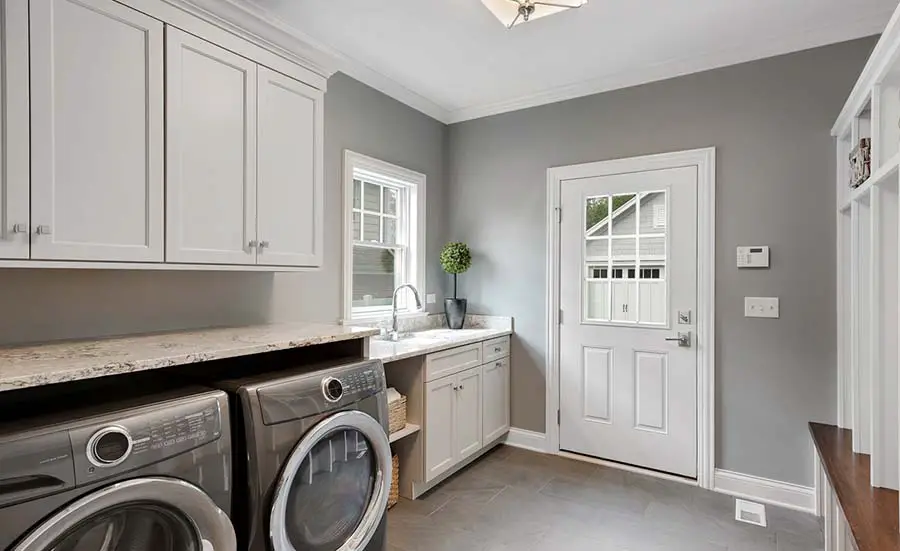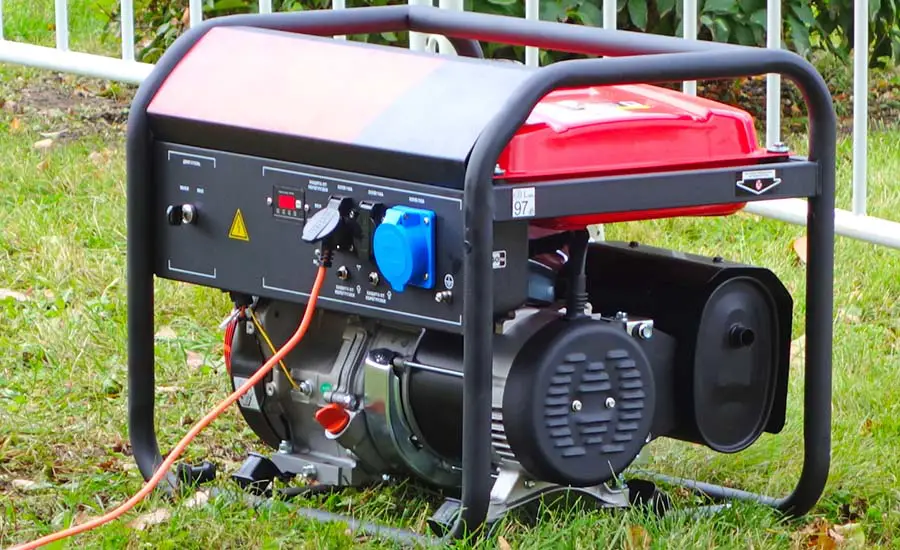
When you have your generator plugged in, installed, covered, and oiled up, the only thing left to do is wait until needed. However, if you are thinking ahead of what you will be able to run, you might start to wonder how much you will be able to power using your average 3500-watt generator.
While a 3500-watt generator typically can’t handle the needs of an entire household simultaneously, you can run a multitude of appliances independently on it. In most homes, you can run the refrigerator, lights, chargers, computers, and a TV system on a 3500-watt generator without a problem.
However, you may have more things that you want to have running off your generator; determining just how much you can do is essential. Every 3500-watt generator has different tolerances, and most cannot handle the total power draw of an entire household with all appliances on simultaneously.
How Many Appliances Can You Run Off a 3500-Watt Generator?
We recommend running only two large appliances simultaneously, with smaller devices making up the remainder of the available power. Your TV, laptop, and phone chargers all use very little power but can quickly add up to draw too much from your generator system.
Many people assume that running three to four large items and a few smaller ones will easily be possible; however, things usually add up. This means that having all the lights on in the house may seem small but can quickly drain all the power from your generator and cause headaches.
Generators providing only 3500-watts can comfortably ensure that you are not having a bad day when the energy fails. However, if you want to run multiple appliances and other things around the house, you will need to balance what is on and off.
Will a 3500-Watt Generator Run My AC?
If the only thing the generator has to power is your air-conditioning system, then a 3500-watt generator may be able to do it. You can only run one AC system at a time, with a handful of heating systems, as these systems almost always draw a lot of power.
If you need to cool a place down while using a generator, we recommend using a fan system; these will use a lot less power. Many people worldwide have made the mistake of assuming that 3500-watt generators are enough to run everything and then an AC system.
You should be aware of this limitation; you may need an AC system to live or prevent heat stroke comfortably if you live somewhere. In hotter areas around the world, using solar power or other means of producing power specifically for climate control has become popular for a reason.
What Are All the Appliances That Can Run on a 3500-Watt Generator?
When starting up your generator for the first time, you will need to know precisely which appliances in each room you will be able to use. We have made a comprehensive list of the maximum amount of power each room should use and which appliances can run together for ease of understanding.
These are all appliances that should run with care; using everything in the house all at once will quickly kill your generator. However, if you are careful and ensure that you run each room or location as you need, your generator will provide all the power you need.
In the Living Room

This room causes the most headaches when running your generator, simply because while you are cooking, someone will want to watch TV. The general rule is that you only start watching TV once everyone has eaten and washed to save yourself from headaches and arguments.
While the systems in the living room are not nearly strong enough to kill your generator on their own, they can add the little bump that will. Measuring which procedures are active in your living room will comfortably allow you to control the total load on your machine.
- TV & Sound: The most common things to run and two parts that can easily run as they should use the minimal amount of power from your generator. The average TV & Sound system will only use 200 to 500 watts, barely touching the power supplied by the generator.
- Lights: If you have LED lights, you will only use around 5 to 10 watts per light; you will not need more than a few for your living room. Generally, you won’t need to worry about the lights being on, as long as you are sure the lamps that are not being used are off.
- Chargers: Phone and laptop chargers use around the same amount of power that your TV will use, allowing you to charge everything up in preparation. Doing so while watching TV and nothing else is drawing power will stop surges from damaging your devices.
- Consoles: Consoles usually have their power supplies, allowing you to quickly and comfortably use them when running a generator. Even the strongest modern consoles only use around 177 watts even when playing complicated games.
In the Kitchen
Easily and comfortably, the most power-consuming location in your home is the kitchen; almost every single piece of appliance uses a large amount of power. Many of the things you will use in the kitchen can practically singlehandedly use all 3500 watts from your generator.
To overcome this, we recommend counting perfectly how much power each appliance uses and never running more than two at a time. Being careful that you are not using other high-powered devices throughout your house while using the kitchen.
- Refrigerator: The refrigerator, once running, is estimated to use around 1000 watts of power, which can easily be accounted for. However, starting it will spike to around 1500 to 1800 watts, which can kill the generator if other things are already drawing power.
- Induction Plates: Induction plates are the only electric plates we recommend using when running on a generator. However, you must be careful since just one of these plates can use up to 2000 watts at max, ensuring that you never use more than 800 will be better.
- Air fryer: The air fryer that almost every kitchen now has is more eco-friendly but will still use around 1500 watts when in operation. Using only this appliance without using other things is the best way to ensure your generator does not die out suddenly.
- Small Microwave: Your microwave alone can easily and will quickly use all the available power from your 3500-watt generator. We recommend that you set it on the lowest setting and try not to use it at all when you are running off of the generator.
- Lights: Many kitchens have fluorescent lights that can and will quickly cause a large power draw when starting up. Before doing anything in the kitchen, we recommend starting in the mornings; once lit, they will use little to no power as keeping the light burning is the easy part.
- Kettle: A small kettle can draw up to 800 watts of power; an expensive, large kettle can quickly draw 1200 watts of power. If you are already running the refrigerator, the induction plates, and the lights, this will cause a sudden surge and kill your generator.
Outside the House

When longer periods of power interruption happen, you will eventually find yourself looking for a way to take care of the things surrounding your home. Many people learn through trial and error which of the things they can and should run.
After a week or two of no power, you may have to mow the lawn, fix something in the garage, or maybe use a pump to empty floodwaters. You can use the energy from the generator to do this, but there is an upper limit to what can be run at the same time.
- Sump Pump: The most important thing for many people who live with basements is the sump pumps hidden in them. Water and moisture accumulation is inevitable and can cause damage if left. Fortunately, most sump pumps only need around 1500 watts to start up.
- Power Tools: If the only thing your generator has to run is your garage, then you can comfortably and efficiently use any handheld power tools. The power supplied by the 3500-watt generator can easily do everything needed, as long as you aren’t using two or three tools all at once.
- Lights: When running on a generator, we always recommend using the lights only in places that you are active. If you are not walking around the house, it will be best to have all the outside lights shut off until you are reconnected to the main power supply for your home.
- Lawnmower: Electric lawnmowers and wheat eaters are things most garden lovers have at the ready and will usually be safe to use. These tools, when used alone, will not eat through the power supplied by your 3500-watt generator.
Bedrooms and Office
Things can be exciting when we move to bedrooms and office spaces; these are the places that can either be deceptively high or low. We focus on the four things we know you can leave running or charging while you sleep and the generator runs outside.
Many homeowners are now working from their homes, so knowing which office tools are safe to run will also be necessary. With the 3500-watt generator being perfect for those running just one or two computers from their home, we need to ensure that you understand how much power you use.
- Chargers: The same as the living room, phone and laptop chargers use only a tiny amount of power and should always be used. Having your phone or notebook powered from their battery will mean you do not have to run the generator as much to get your daily work done.
- TVs: Bedroom TVs rarely have sound systems or consoles on them and can therefore be rung with absolute ease. We recommend that you ensure everything else in the house is shut down and not causing a drain, with the bedroom TV usually being a luxury.
- Computers: A large gaming PC with the latest hardware can quickly draw 1500-watts when fully loaded with a game. However, even a 1500-watt beast PC will use as little as 200-watts when just idling or doing normal office work; always have a UPS on a PC, though.
- Night Lights: Night lights for children have come a long way, with most modern LED ones having built-in battery backups. However, if you need to keep one small light on, the generator will not notice the draw if you decide to leave it running while everyone sleeps.
The Hidden Stuff

People think about the most obvious things when the power goes out, like items in the living room, office, and kitchen. However, there are many hidden appliances that people forget about when the power goes off, significantly as they only impact when you need them.
To understand which items you can leave running and which ones you need to balance out, we looked at the most important ones. People often find themselves without power for longer than they expect and forget that they need new clothes, clean plates, or just some heat.
- Small Pumps: Whether it is a pressure pump or the pump and air system for an aquarium, these are usually not switched off when starting the generator. We recommend that you always keep these in your power budget calculations as living without them may be impossible.
- Heating: Heating can be anything from a small 800-watt fan heater to an extensive 2000-watt underfloor climate control system. If you live somewhere that gets well below freezing, running the heating and nothing else may be the only way you can stay alive.
- Washing Machine: The only time your washing machine may use a lot of power is when starting up. However, it cannot run in conjunction with other appliances in your home and needs to be run as the only thing drawing power from your generator.
- Dishwasher: The dishwasher can be hard to tell, with most small dishwashers easily allowing you to use them when running off of generator power. However, larger dishwashers can easily draw well over 2000-watts of power from your generator and need to be monitored.
Can You Run Everything Simultaneously On a 3500-Watt Generator?
No, you will not be able to power everything in your house at the same time when you are using a 3500-watt generator. Instead, you must ensure that you balance your appliances, using only the kettle, then the microwave, then the induction, making sure one is off when using the other.
Once you are done cooking, cleaning, or working, your overall power usage drastically decreases, with most people not even needing the full power from the generator. When no one uses the refrigerator, the heating, or kettle, the total power draw can quickly drop below 3500-watts.
This is why it is best to do as little as possible when your power does fail; you can save fuel and energy by being relaxed. Usually, when people need generators, they can get normal power within a few hours, with only extreme cases causing days of generator usage.
How Much Power Does a Normal Household Need?
Depending on your home and the number of things you have, the power you need will vary greatly, with most homes requiring around 10 Kilowatts. However, when reducing the total amount of appliances, your home will only need 2000 watts for the refrigerator, lights, and TV.
As your home uses more things, the more power it will need; overall, this decides which generators will work for your house. A 3500-watt generator is enough to power most normal households; however, it will not be enough if you have an extensive entertainment system or heavy-duty refrigerator.
The first step to buying any generator should always be to check the minimum power you will need for your house. Many people assume that they could switch things off; however, this is not a good strategy if just two appliances take all the available capacity.
How Do You Measure How Much Generator Power Your House Needs?
To measure how much power your house needs to run, you will have to add up how much the most used appliances need. If you have a kitchen that uses 2000-watts even when not cooking, you will need to account for that when you purchase your generator.
Going through your home, you will see how much power each system needs on the back of appliances, usually on a sticker somewhere. Adding these up will give you the total power draw that your house needs to work, going through this list and marking the necessary.
This is the best way to measure how much power your generator will need to provide, as you should only run the most needed appliances. Generators are not meant to run every electrical device within your home, usually only to provide the essential appliances with power.
Why Do You Need to Start-Up Slowly When On a Generator?

The generator, once running, can only provide around 3500-watt of power, with a surge overhead of 4000-watt that can last for only a few seconds. Every large appliance in your house will use more energy to start up before going down to idle power consumption.
When starting up all of the appliances after a power outage, you need to ensure that they do not draw so much that they instantly cause the generator to be overloaded. With most devices requiring this surge, you need to start them one by one to get the best results.
Only after your refrigerator has started up should you try to start something like the kettle or the plates. If you are starting up something like the dishwasher, microwave, or other high wattage appliance, we always recommend turning off as much light as possible, allowing for some extra power.
Why Are There Things You Cannot Run on A 3500-Watt Generator?
Large appliances that draw too much power on their own cannot be run on generators as small as 3500-watts because they require too much power. The generator can only provide a maximum of 3500-watts; having it run at total capacity eventually damages the engine.
One of the most common problems generators face is that their owners forget that they are physical engines running and not simply batteries providing power. Most people worldwide are used to battery-powered systems, where the maximum wattage can be broken, with the battery just dying faster.
However, generators are not like this, and both the engine and the electrical components will sustain damage if they have to power things that draw too much electricity constantly. It is usually for this reason that people will never run air-conditioning units at all, no matter how large the generator is.
How to Increase Total Available Power from the Generator?
When you have your system ready and running, you will quickly find yourself with the challenge of reducing the total amount of power being drawn from it. Quite a few owners have done crazy things to ensure their generators can provide power to what they see as important.
Apart from doing the obvious, like opening the throttle, there are a few things that you can do around the house to decrease power draw. Not only will this significantly improve your generator experience, but it will also ensure that your monthly power bill drops.
- Replace Bulbs: You generally get three types of bulbs, halogen, power saving, and LED, each with its own merits. For energy efficiency and cost efficiency, you should replace almost everything with LEDs to save hundreds of watts of power throughout your home.
- Energy Efficient Appliances: Almost all major appliances come with energy efficiency ratings; the better these ratings are, the less power they use. Ideally, it would help if you were filling your home with as many energy-efficient appliances as possible.
- Gas Geyser: Gas geysers only need a tiny spark to ignite the pilot flame for your water heating needs. If you have a gas geyser, you can comfortably and efficiently produce hot water even when you have a small generator to power the lights in your home.
- Shut-Off Unused Appliances: The most crucial thing to decrease power consumption, shutting off and unplugging unused appliances. Your Deepfreeze can stay cold for at least 5 to 6 hours before it will even begin thawing; chargers, TVs, computers should all be unplugged.
- Home Insulation: Cold homes or hot homes will significantly benefit from proper insulation and protection from the outside weather. When you don’t need to cool or heat your home using something, you don’t need to stress how much will draw from the generator.
- Generator Maintenance: A well-maintained generator can quickly provide maximum power output until it sputters its final breath. However, a barely maintained generator may have trouble providing the full 3500-watts it is rated for within a few years.
Conclusion
Your 3500-watt generator should easily be able to provide power to most of the important appliances around your home. If you work on balancing it all perfectly, you will find that you can run almost anything you may need to power, even in the darkest night.
Whatever you do, please never try to use the microwave and the kettle together; your generator will hate both equally!

